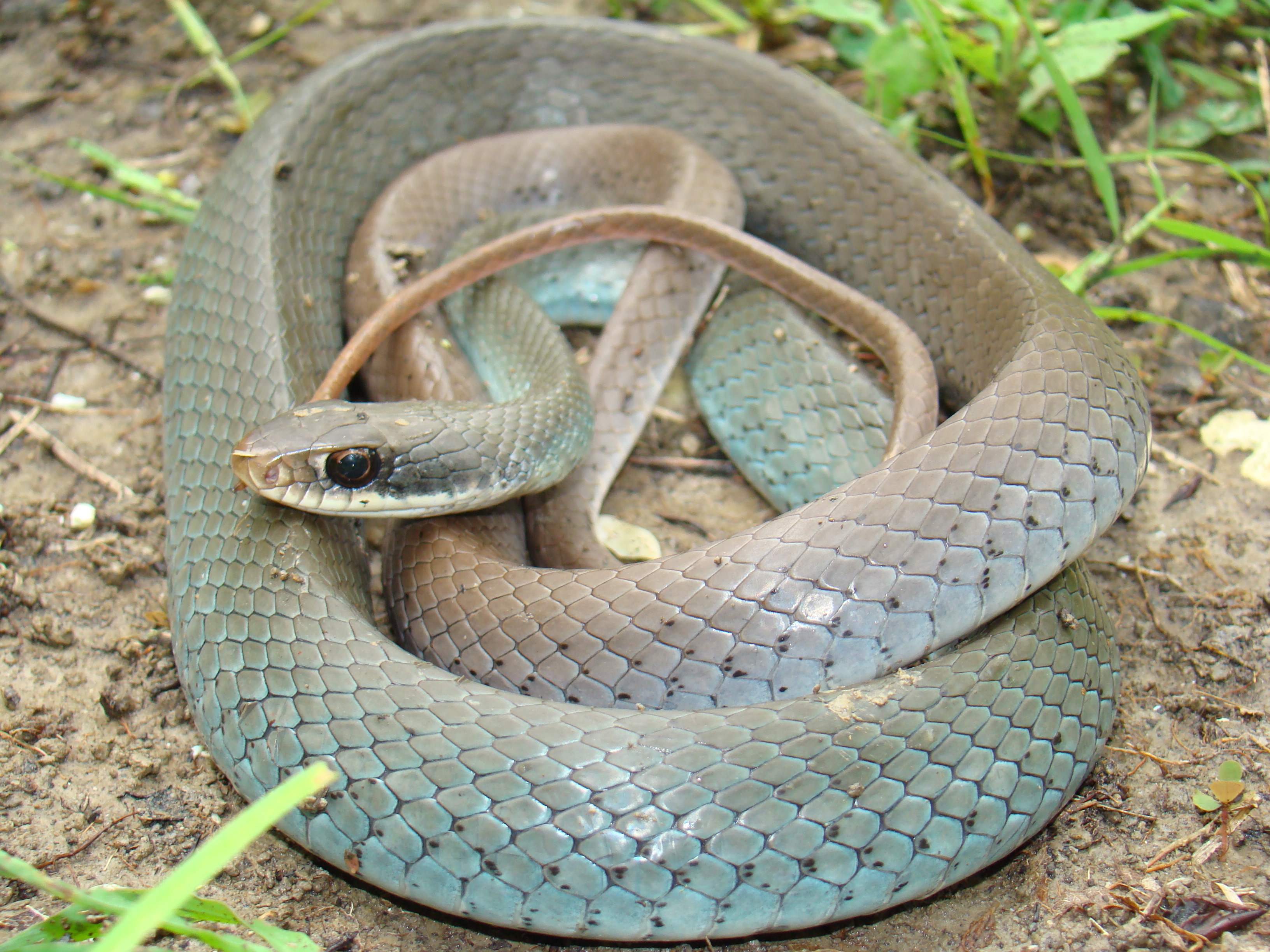
|
Black-Masked Racer - Coluber constrictor latrunculus
Subspecies of the racer; a long, slim slate-gray snake with a broad black stripe behind the eye; maximum length is 75 1/4 inches, 1911mm.; primary diet
consists of rodents, lizards, frogs, and birds; relatively common in the park. Referred to as the fastest snake, but if a person were to walk fast, her
or she could outrun this or any snake in North America. |
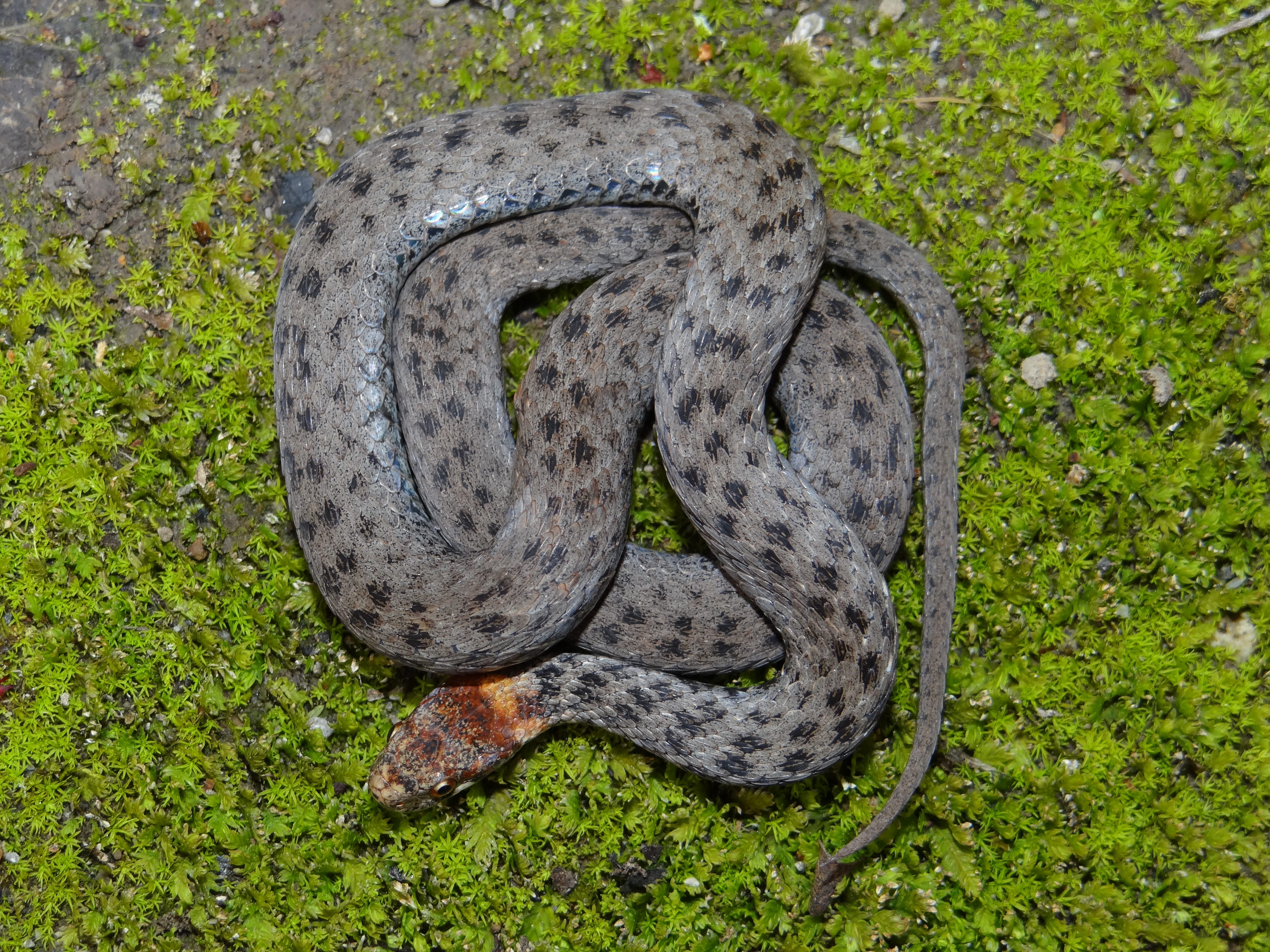
|
Red-Bellied Snake — Storeria occipitomaculata |
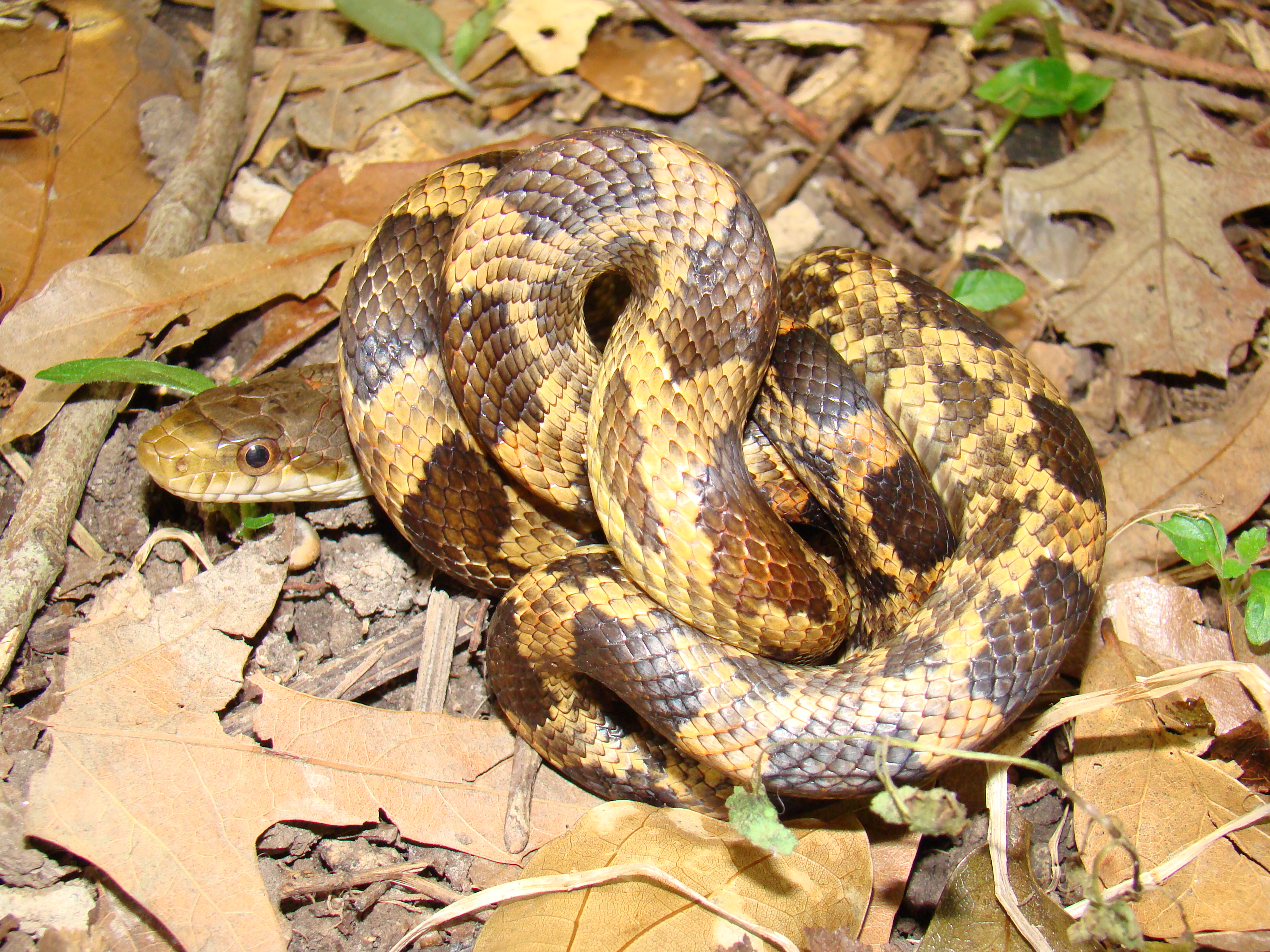
|
Texas Rat Snake - Pantherophis obsoletus
Subspecies of the rat snake; long gray-brown or yellowish-brown arboreal snake with dark blotches; maximum length is 101 inches, 2565mm.; primary diet
consists of rodents and birds; common in the park. Commonly found in barns and house attics searching for rats and mice. When threatened it sometimes
vibrates its tail. And, if it is in leaves, will sound like the buzz of a rattlesnake. |
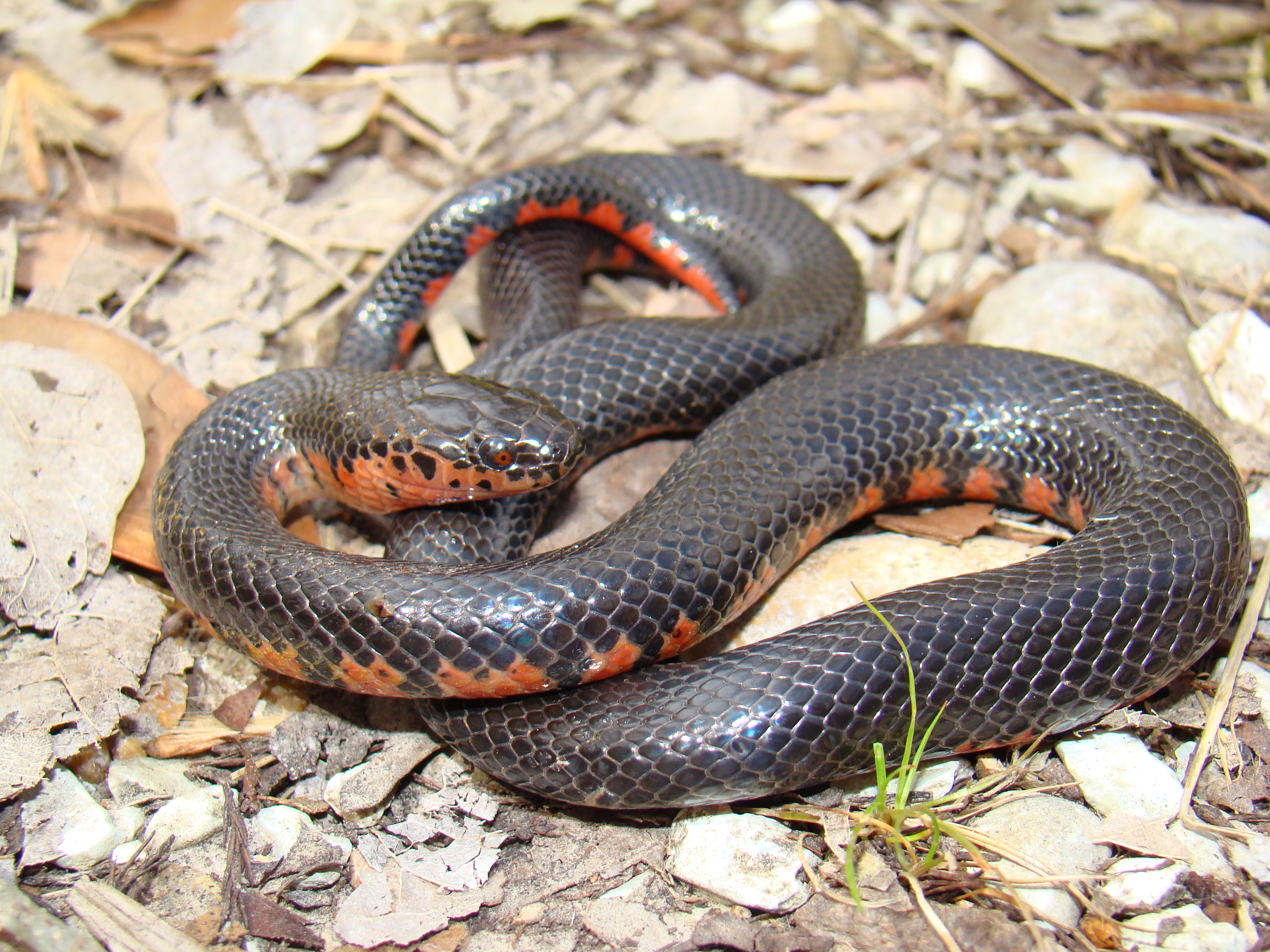
|
Western Mud Snake — Farancia abacura reinwardtii
Subspecies of the mud snake; a long medium bodied black snake with a bright red belly; Maximum length is 81 inches, 2057mm.; aquatic, rarely seen out
of water; primary diet consists of amphiuma and siren; rare in park. |

|
Eastern Hog-Nosed Snake - Heterodon platyrhinos
A medium sized, heavy bodied snake with a variable dark pattern on a lighter background; has an upturned snout used for digging toads; maximum length
is 45½ inches, 1156mm.; primary diet consists of toads but it will also eat frogs and salamanders; fairly common in park. This snake will flatten its
neck like a cobra and hiss loudly when disturbed. If this doesn't intimidate the intruder the hog-nose will flip on its back and writhe around with
its tongue hanging out and finally lay still as if dead. |
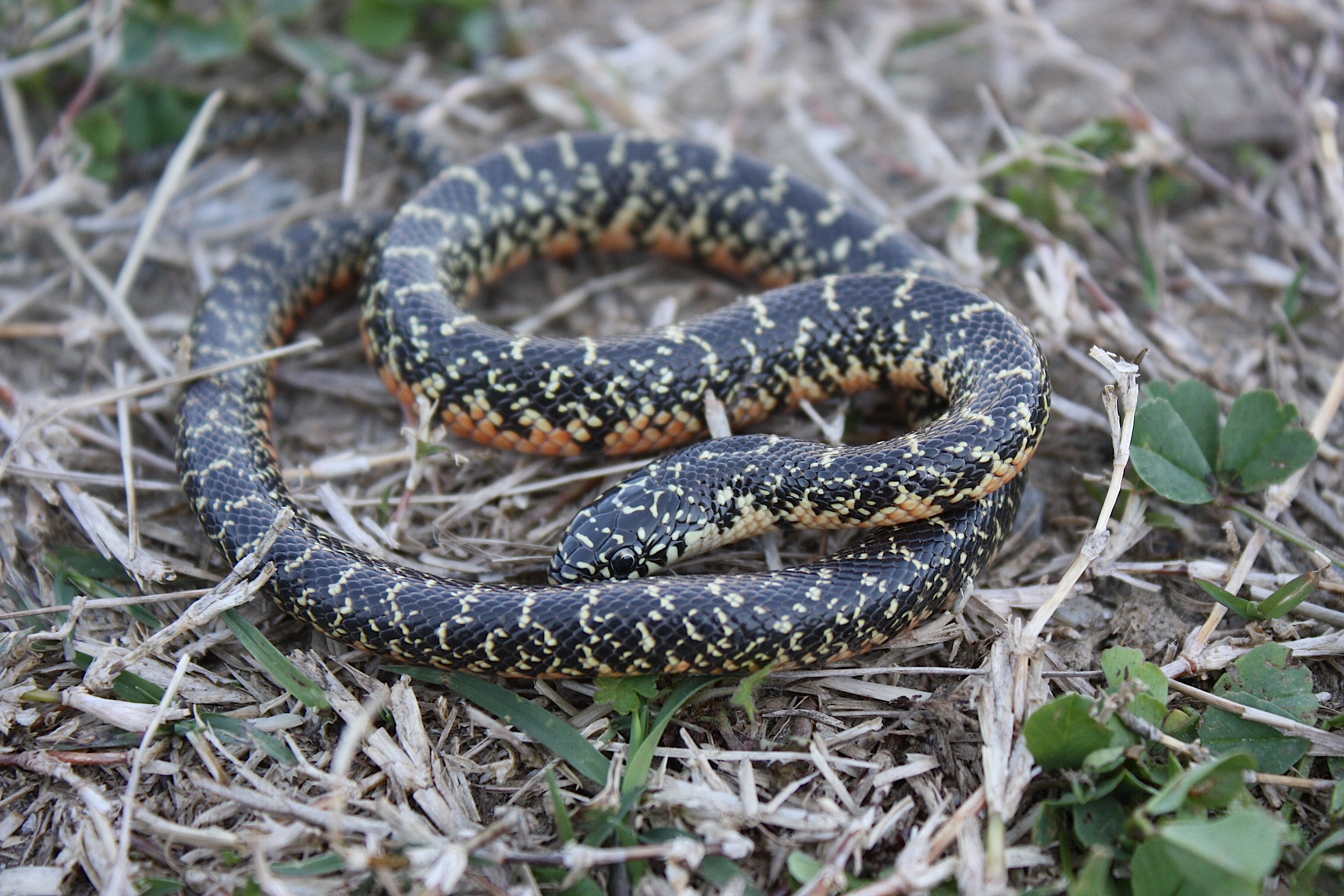
|
Speckled Kingsnake - Lampropeltis getulus holbrooki
Subspecies of the common kingsnake; a medium sized shiny, black snake with small light colored (yellow) spots; maximum length is 82 inches, 2083mm.;
common in park; primary diet consists of mice, snakes, birds, lizards, and eggs. They can eat venomous snakes because they are immune to the venom.
They also eat non-venomous snakes including other kingsnakes. |
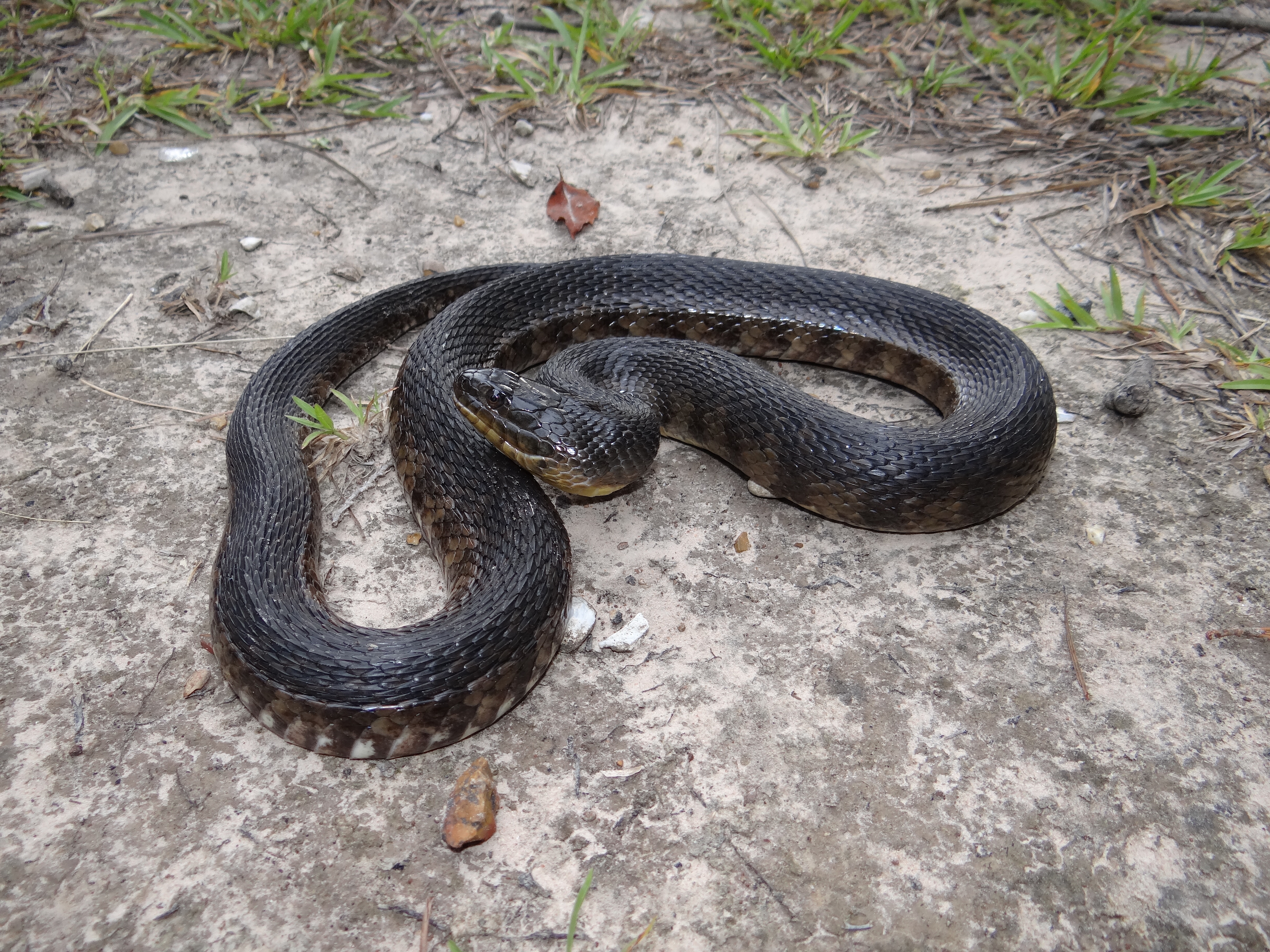
|
Western Green Water Snake - Nerodia cyclopion
A heavy-bodied olive brown snake with an indistinct pattern of narrow dark crossbars; maximum length is 50 inches, 1270mm.; prefers still or
slow-moving water and is seldom away from water; common in park. Primarily a diurnal basking snake during the colder months and a nocturnal
aquatic snake during the warmer months. Primary food is fish, and it is especially fond of mosquito fish. |
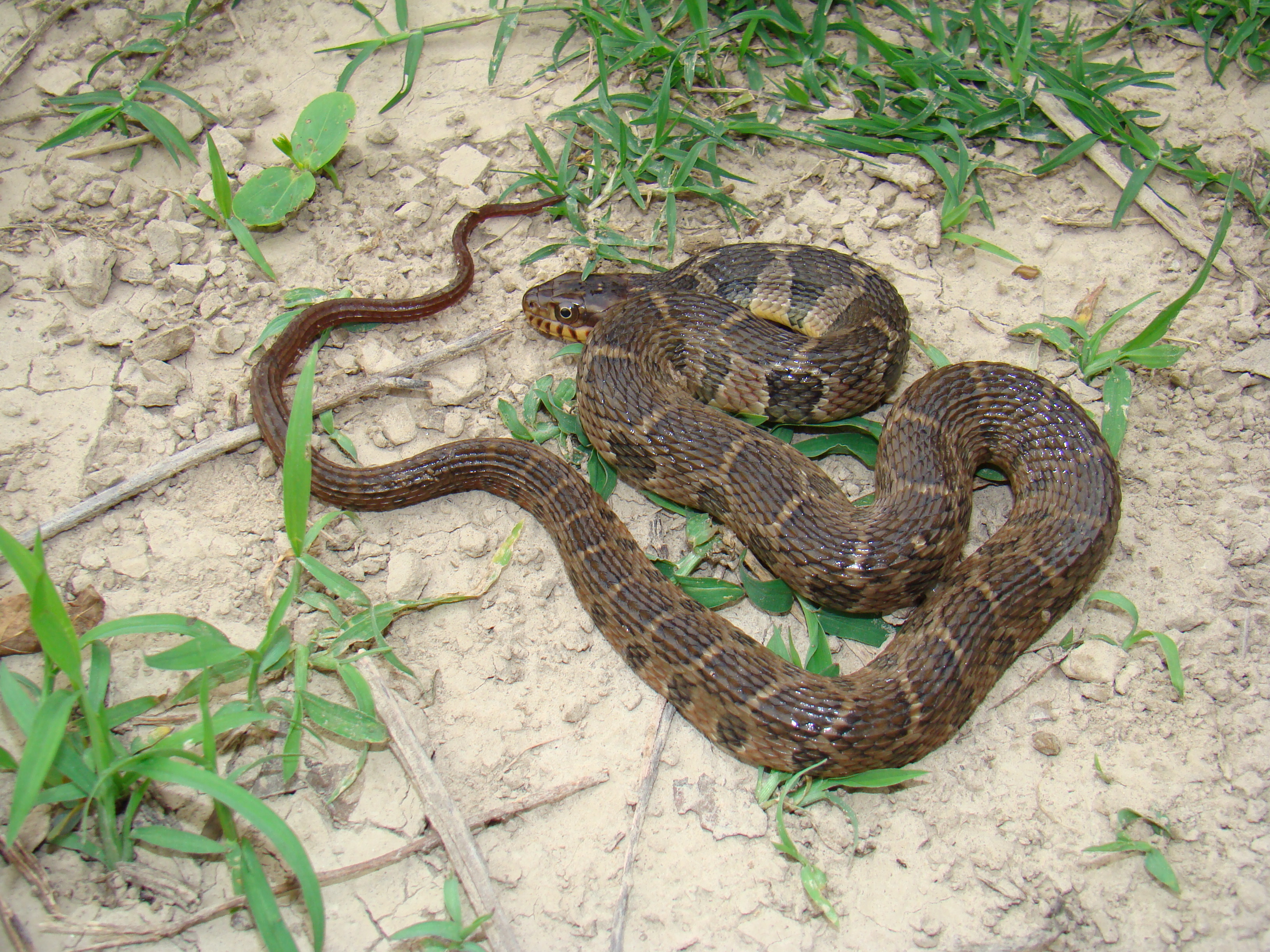
|
Yellow-Bellied Water Snake - Nerodia erythrogaster flavigaster
Subspecies of the Plain-bellied water snake; a long, heavy-bodied, gray or dark-brown snake with a yellow belly; maximum length is 62 inches,
1575mm.; rarely bask and are primarily nocturnal in the summer; primary diet consists of fish, crawfish, and leopard frogs; common in park. |

|
Broad-Banded Water Snake - Nerodia fasciata confluens
Subspecies of southern water snake; a long, tan, heavy-bodied snake with broad dark bands; maximum length is 62 1/2; inches, 1588mm.; frequently bask;
nocturnal in the summer; feeds on fishes, anurans, and frogs; common in park. |
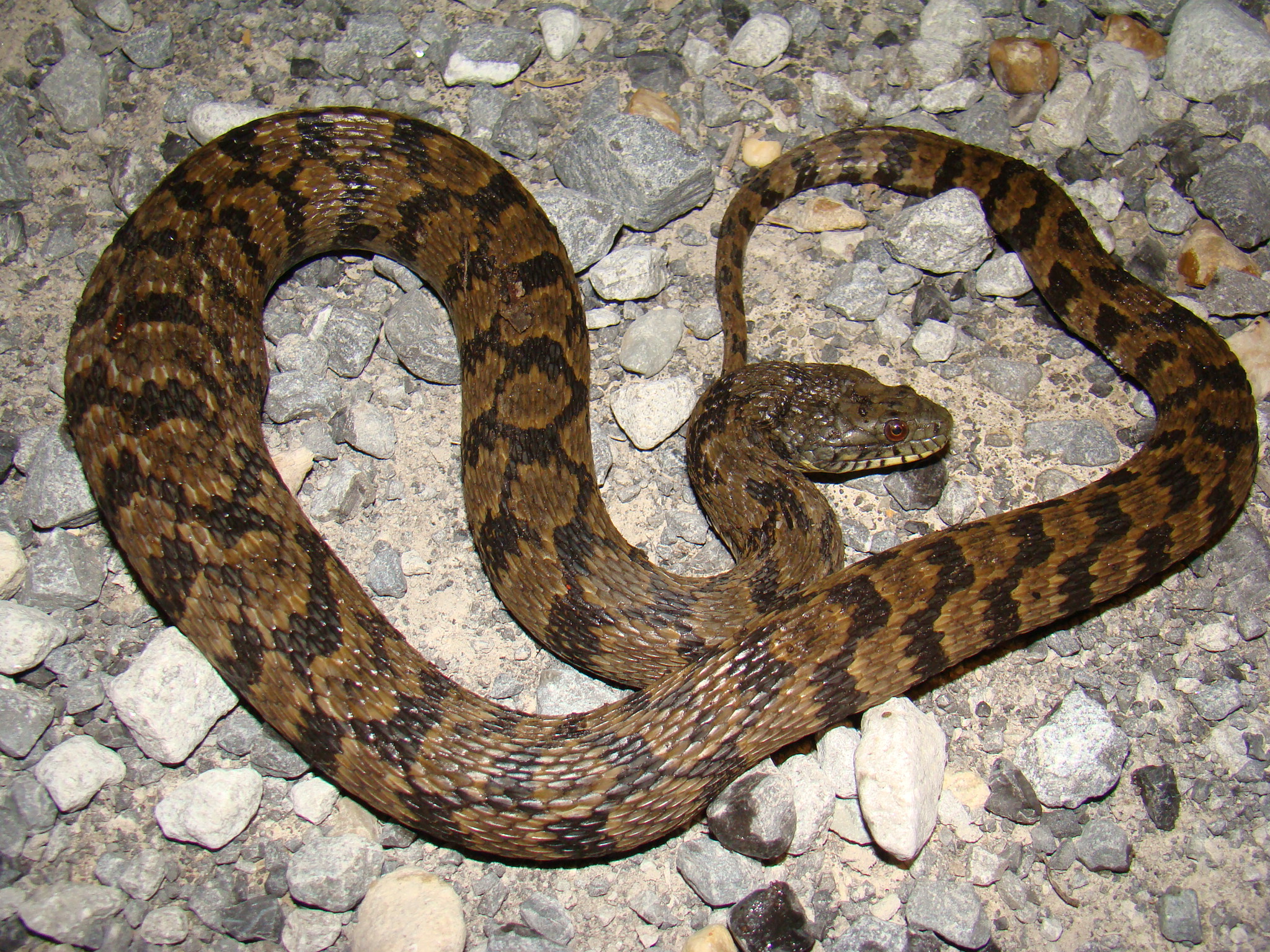
|
Diamond-backed water snake - Nerodia rhombifera
A long, heavy-bodied tan to gray-brown snake with a pattern of dark brown to black chainlike markings; maximum length is 63 inches, 1600mm.; often
bask in low hanging branches over water; predominantly nocturnal from April through October; the most abundant water snake in the Atchafalaya,
often mistaken for the Water Moccasin; primary diet consists of fishes and frogs; common in the park. |
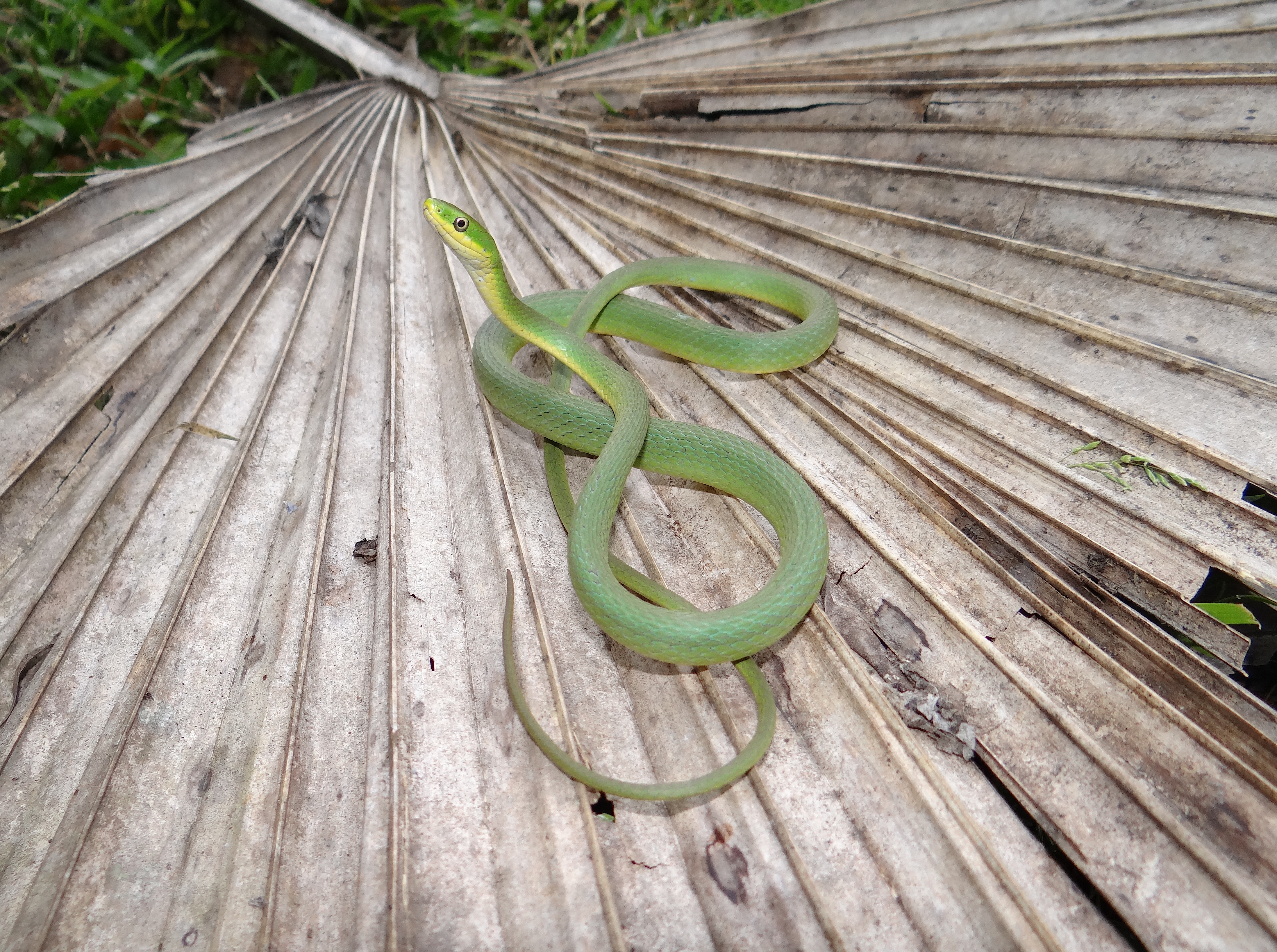
|
Rough Green Snake - Opheodrys aestivus
A green extremely slender snake with a white or yellow belly; maximum length is 45 5/8 inches, 1159mm.; primary diet consists of grasshoppers,
katydids, spiders and crickets; fairly common in the park. They are excellent climbers often found in vines, bushes, or small trees, frequently
near streams or lakes. |
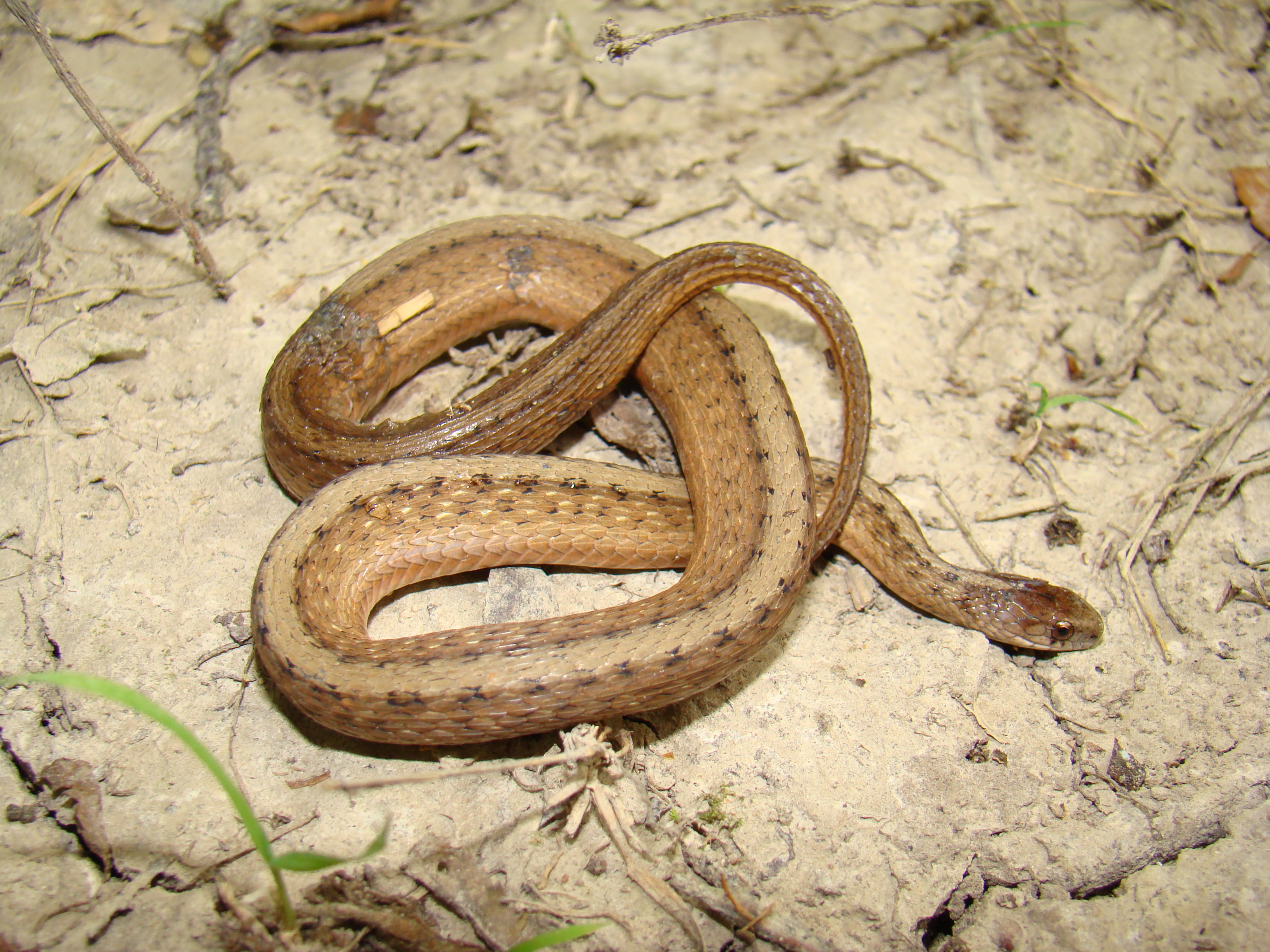
|
Brown Snake - Storeria dekayi
A light-brown or gray-brown, thin bodied snake with a pale vertebral stripe bordered by dark spots; white or pinkish belly; maximum length is
20 3/4 inches, 527mm.; often found under rotting debris and in gardens; primary diet consists of earthworms, slugs, and snails. Mistakenly
referred to as a ground rattler. |
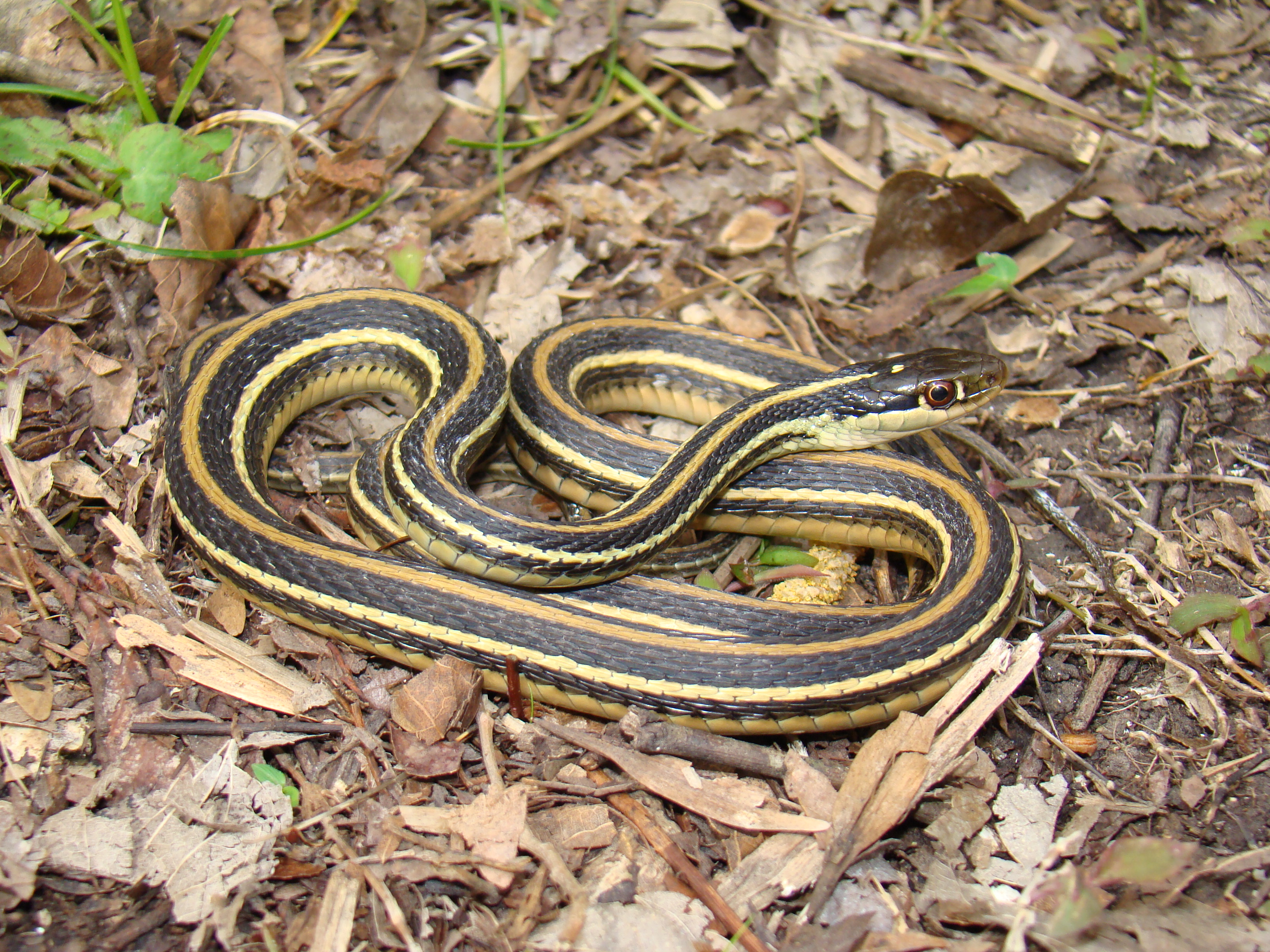
|
Western Ribbon Snake - Thamnophis proximus
A olive-brown to black thin bodied snake with a gold or orange vertebral stripe and a yellowish stripe on either side of the vertebral stripe;
maximum length is 48½ inches, 1232mm.; lives near water; primary diet consists of fish and amphibians; very common in the park. Often mistaken
for the Common Garter Snake. |
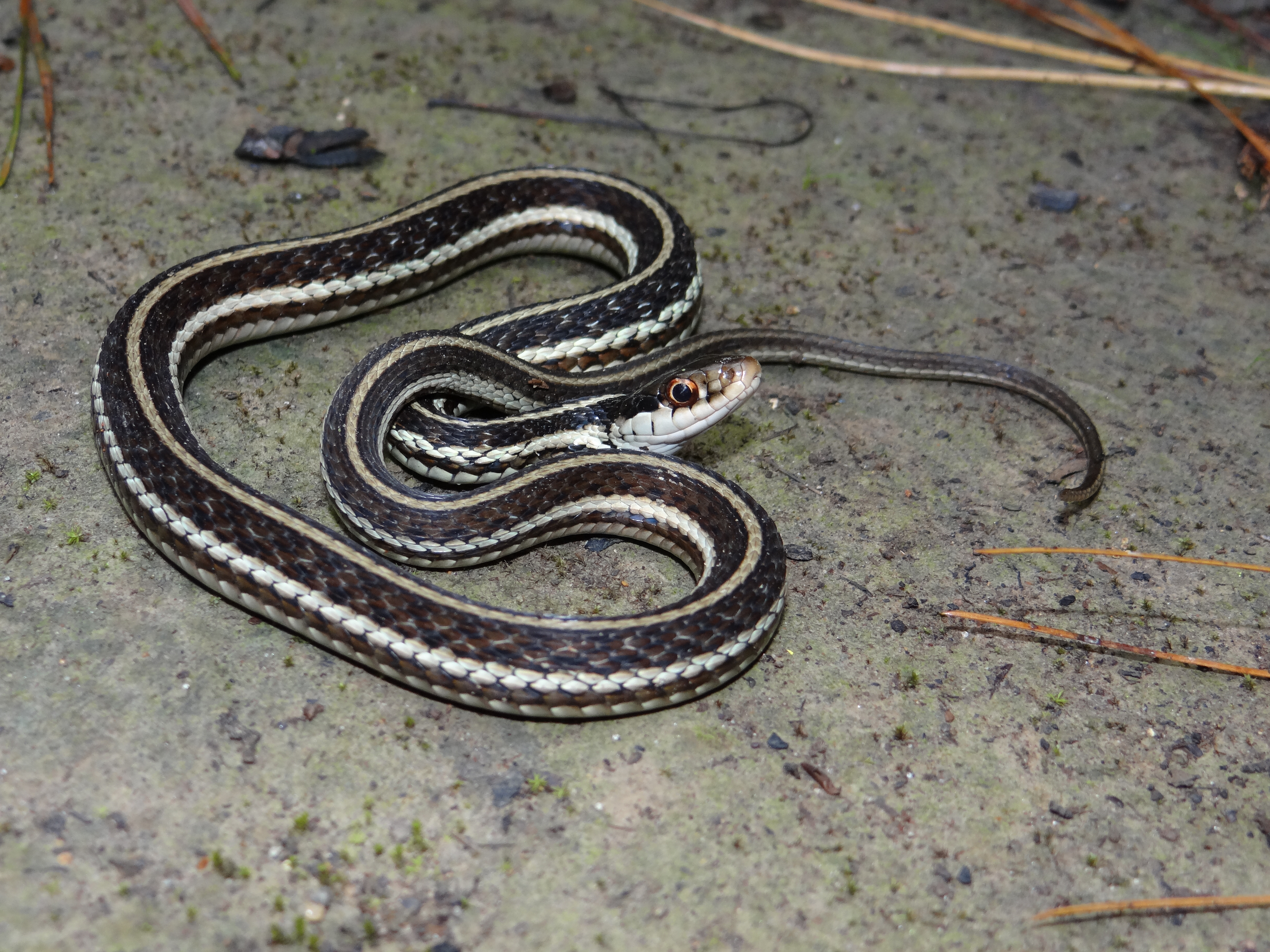
|
Common Garter Snake - Thamnophis sirtalis
A nearly black thin bodied snake with a yellowish or red-orange vertebral stripe and a light yellow stripe on either side of the vertebral stripe
with two rows of alternating black spots between stripes; maximum length is 52 inches, 1321mm.; primary diet consists of earthworms and amphibians;
lives near water; very common in the park. Most widely distributed snake in North America. Often mistaken for the Ribbon Snake. |